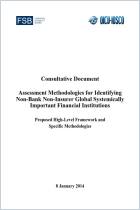加入 getAbstract 阅读摘要

加入 getAbstract 阅读摘要
Artak Harutyunyan, Alexander Massara, Giovanni Ugazio, Goran Amidzic and Richard Walton
Shedding Light on Shadow Banking
IMF, 2015
看看什么内容?
Regulators shouldn’t overlook the role traditional banks play in shadow banking.
Recommendation
Recent studies suggest that the shadow banking system’s use of market-based, nondeposit funding for its activities reveals important clues about the health and relative risk of an economy. But traditional banks are also big issuers of these “noncore liabilities,” according to International Monetary Fund economists Artak Harutyunyan, Alexander Massara, Giovanni Ugazio, Goran Amidzic and Richard Walton. Their statistical research on the linkages in financial intermediation could lead to ways of identifying the early warning signals of the next financial crisis. getAbstract recommends the scholars’ broad view of shadow banking to central bankers, policy makers and regulators.
Summary
About the Authors
Artak Harutyunyan, Alexander Massara, Giovanni Ugazio, Goran Amidzic and Richard Walton are economists at the International Monetary Fund.























Comment on this summary